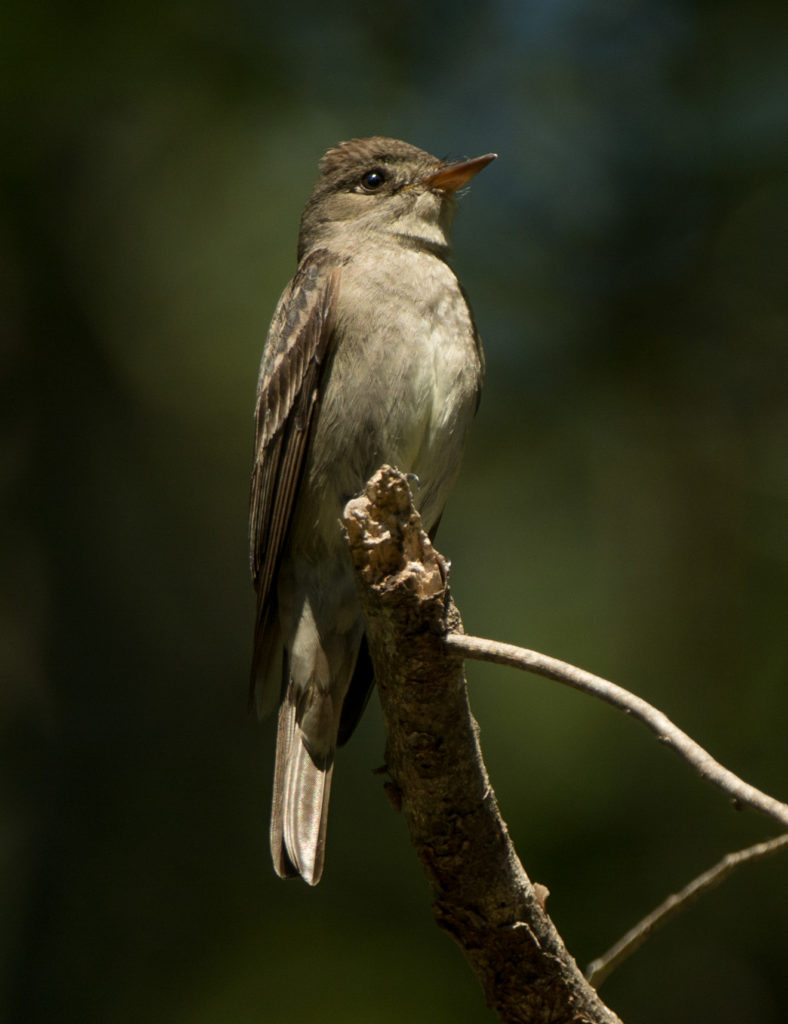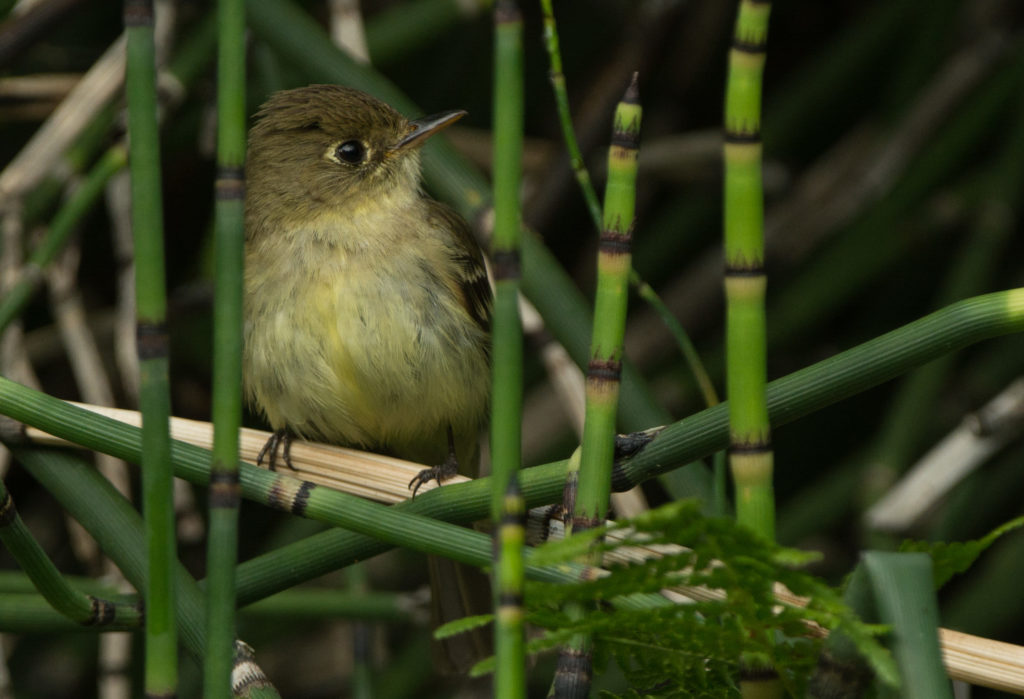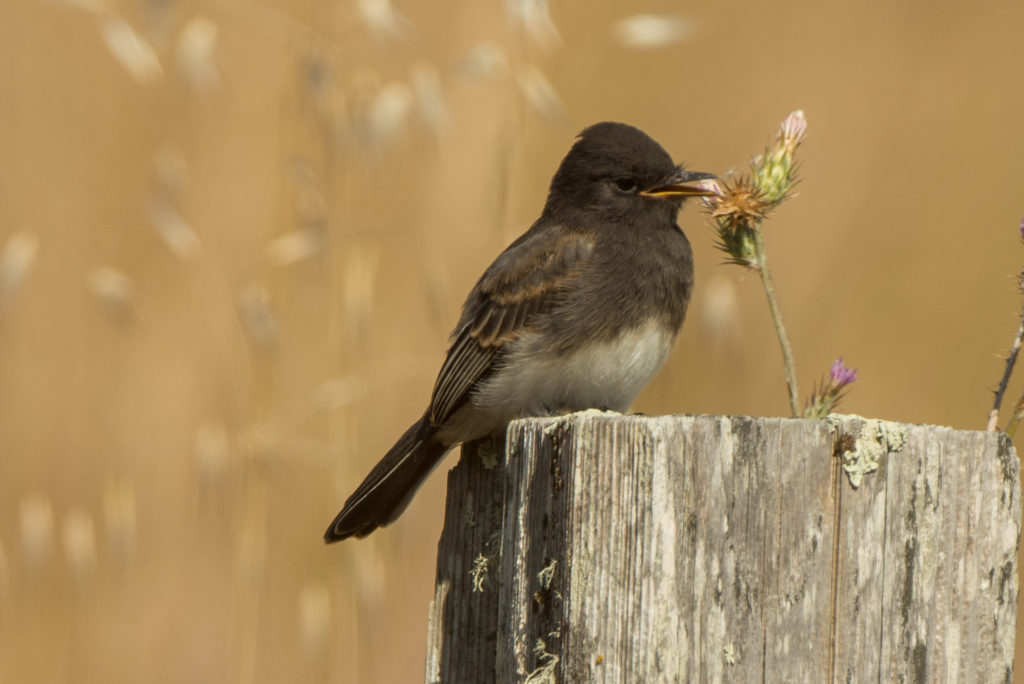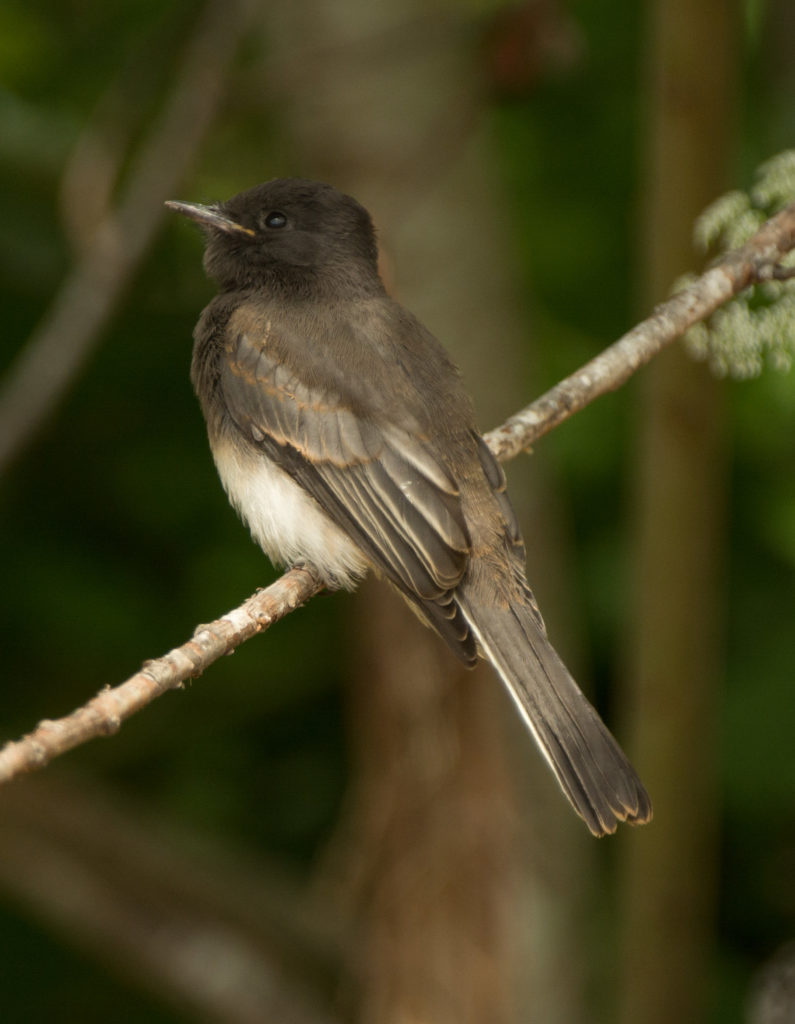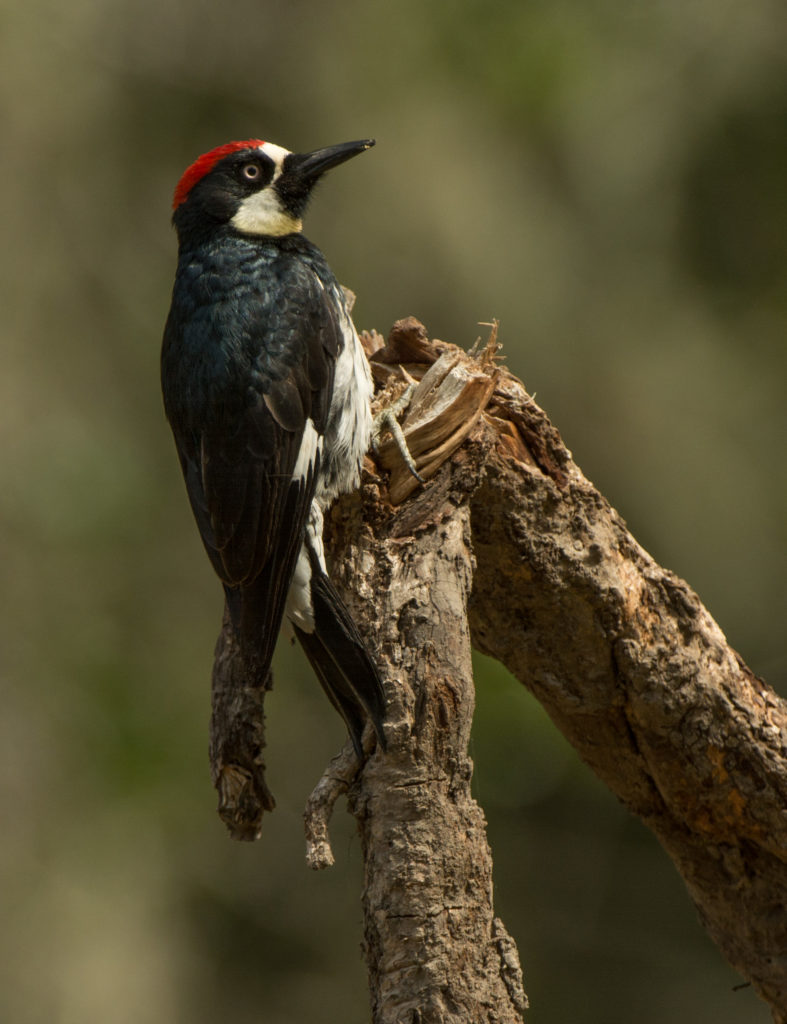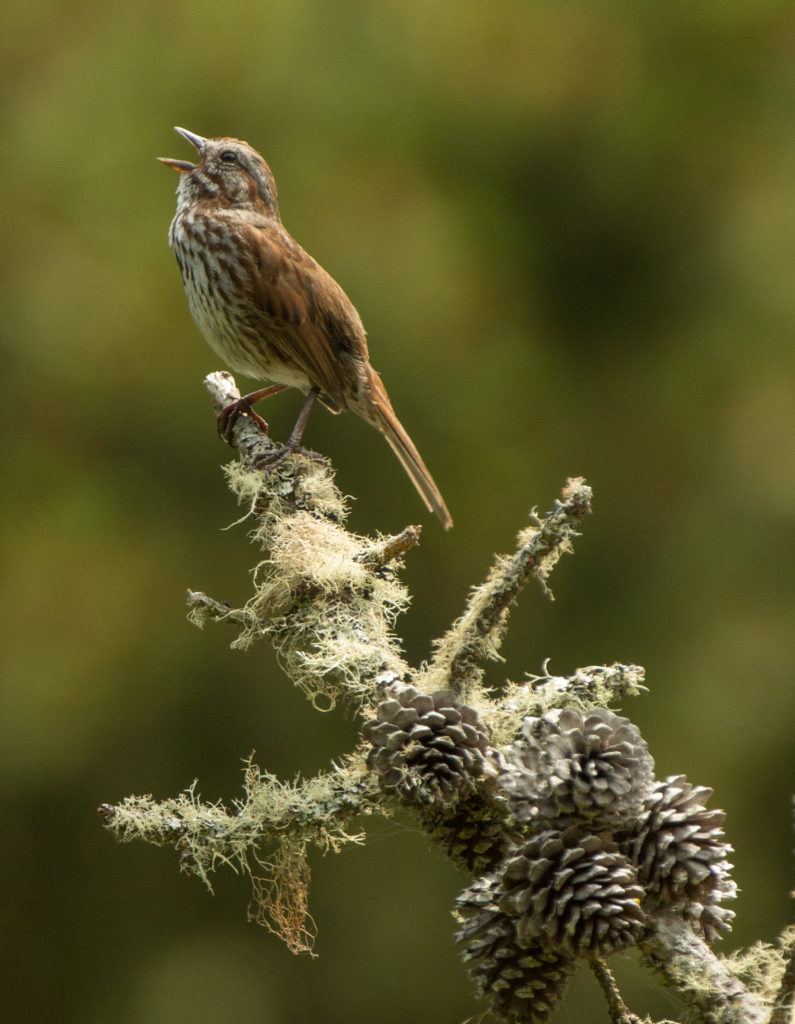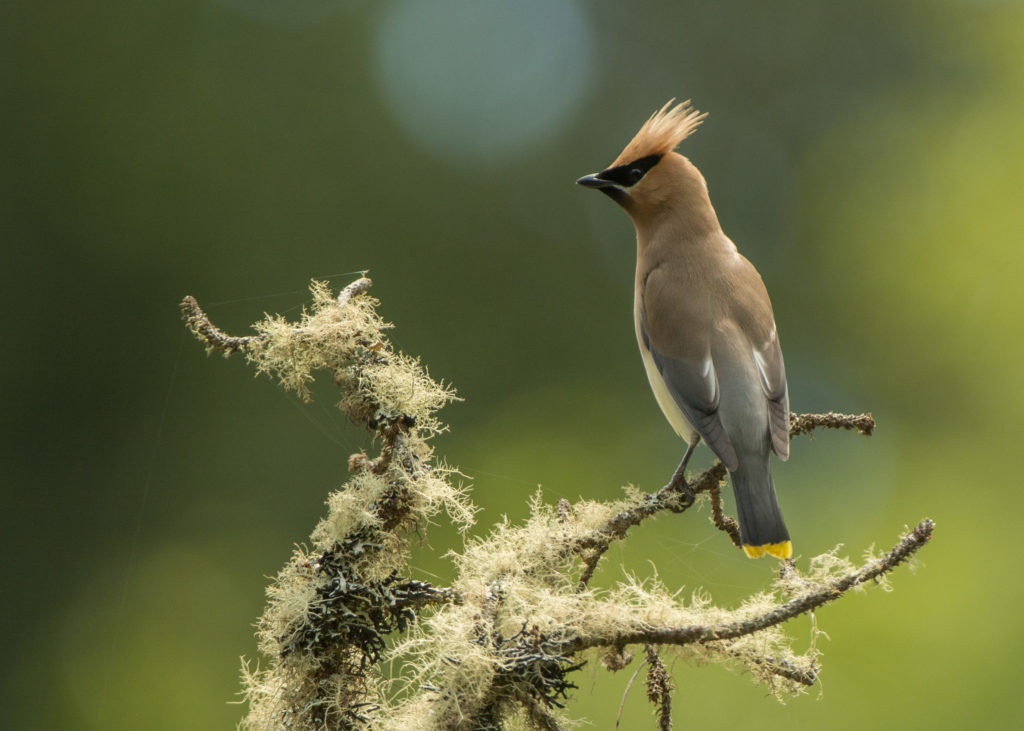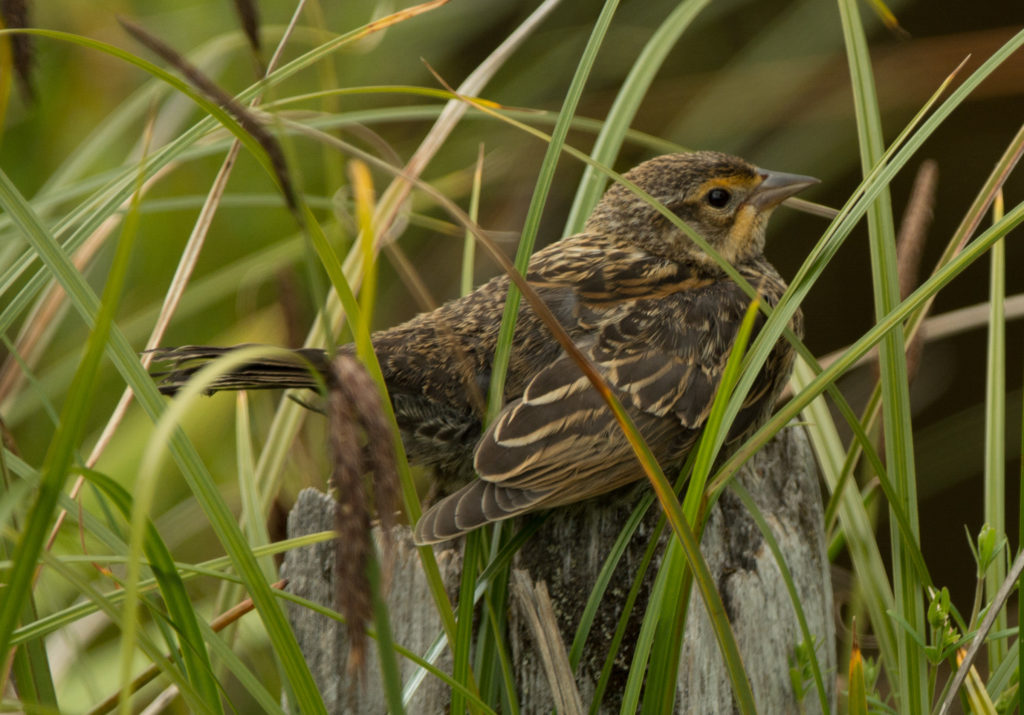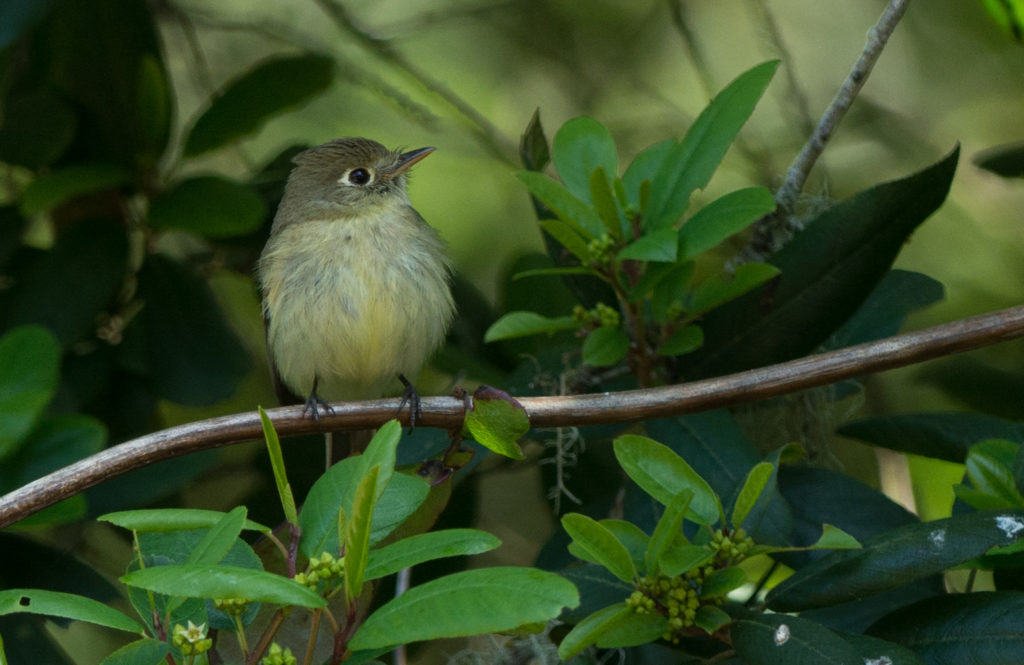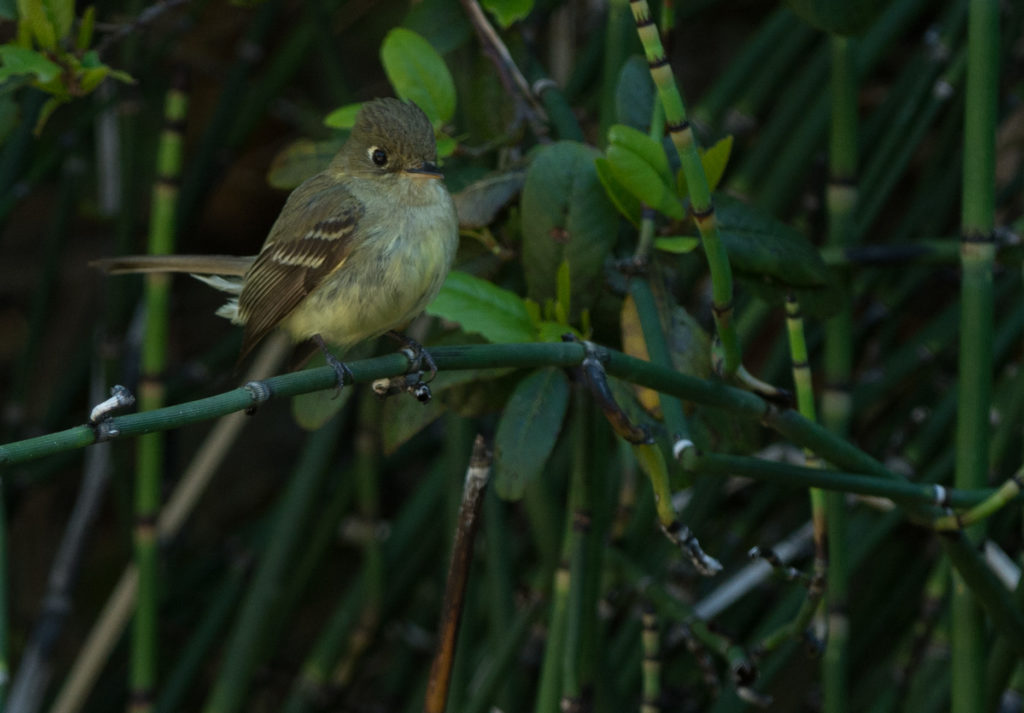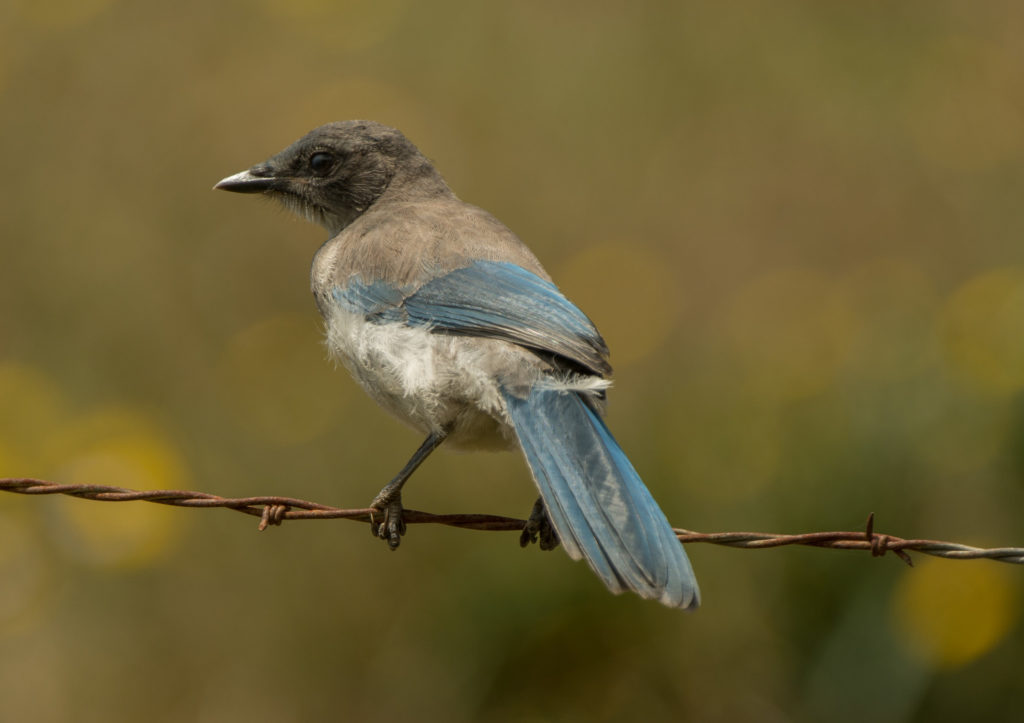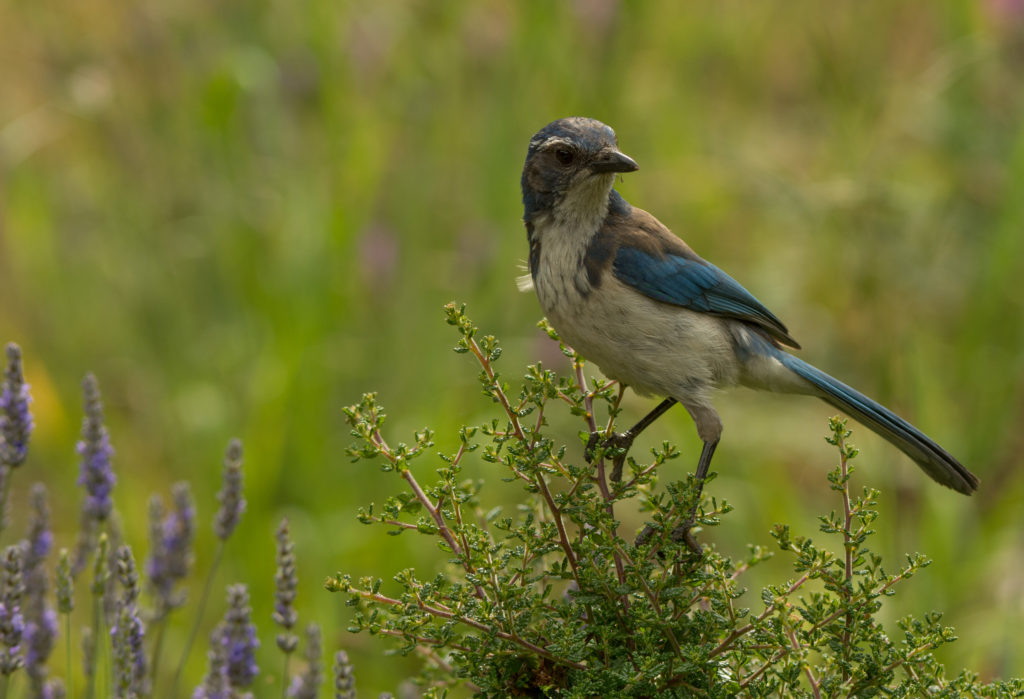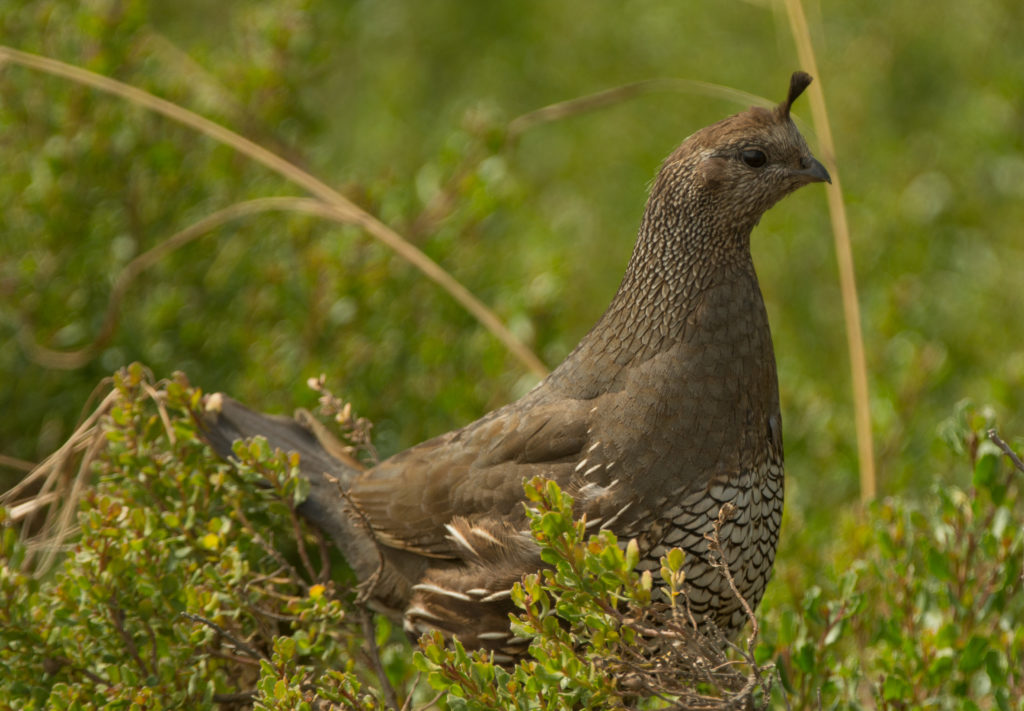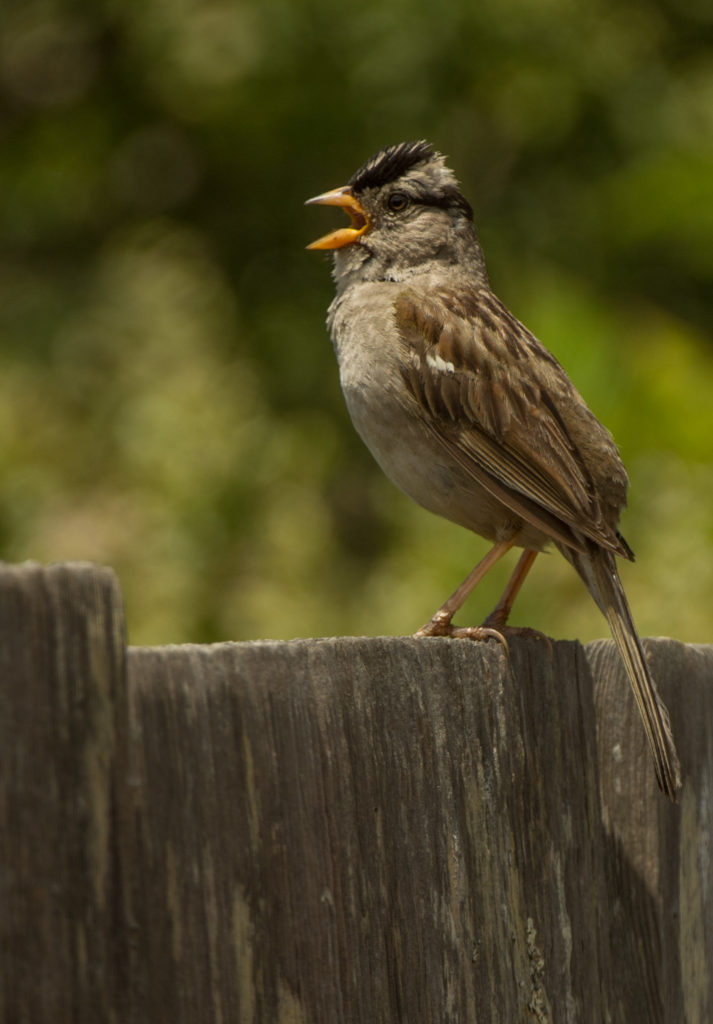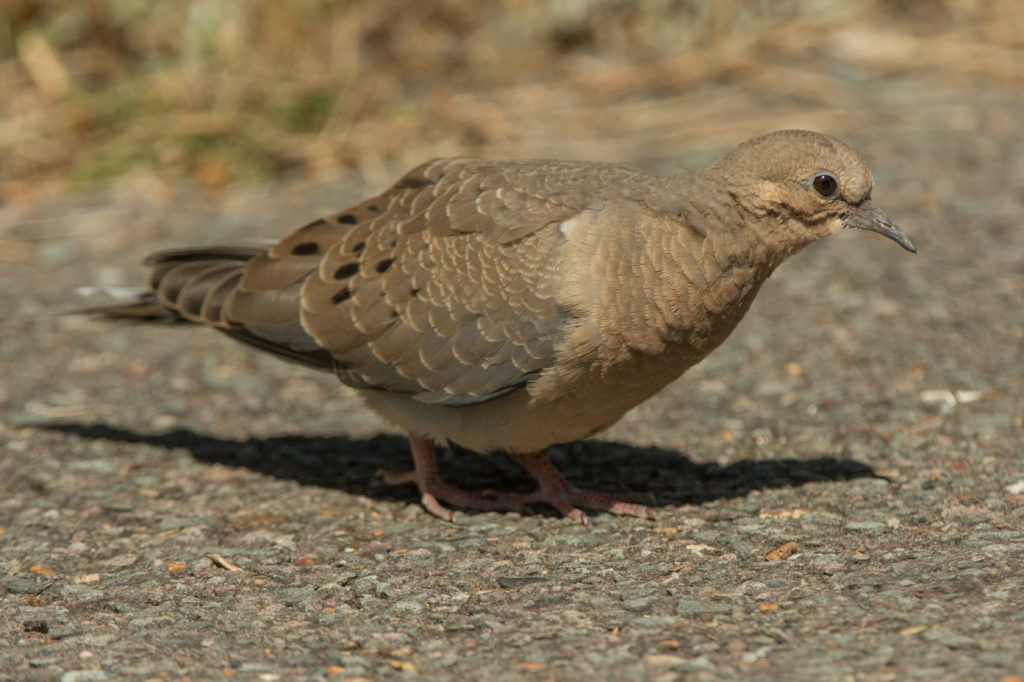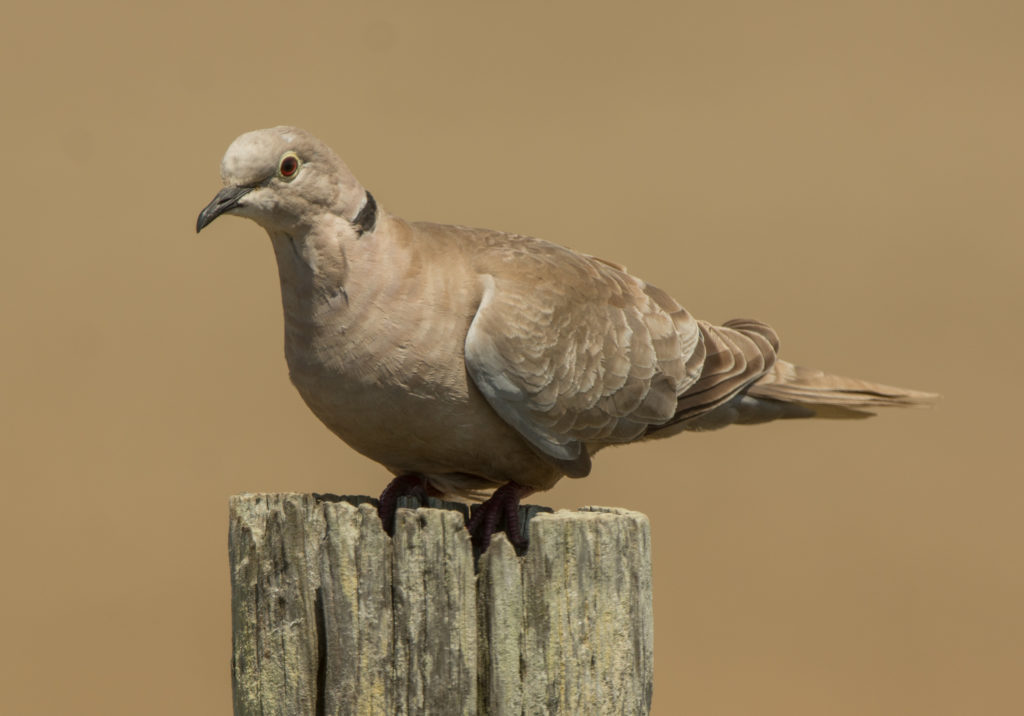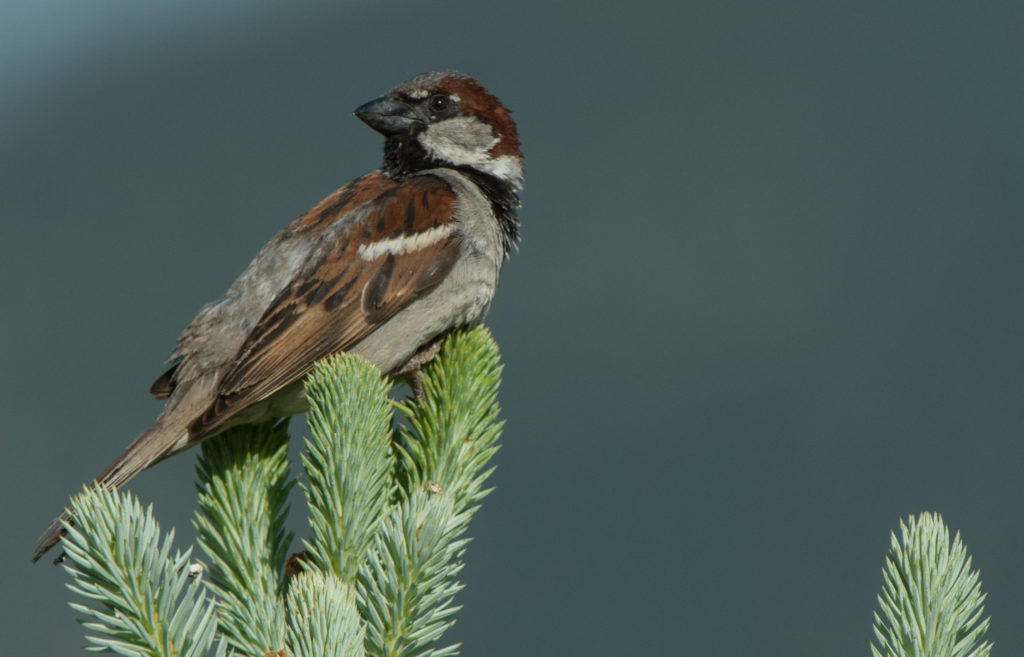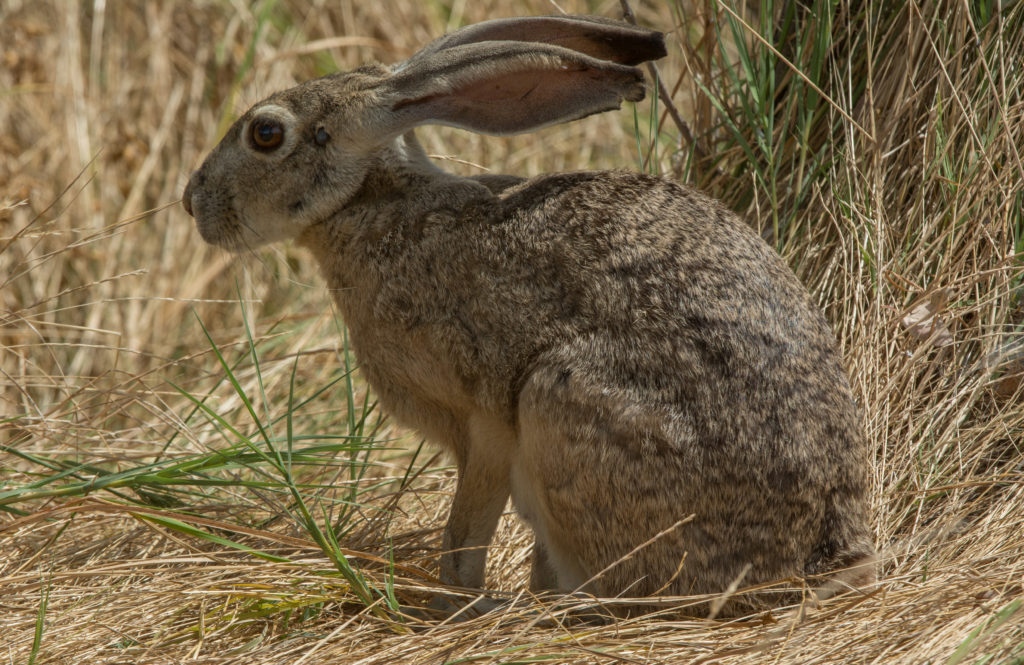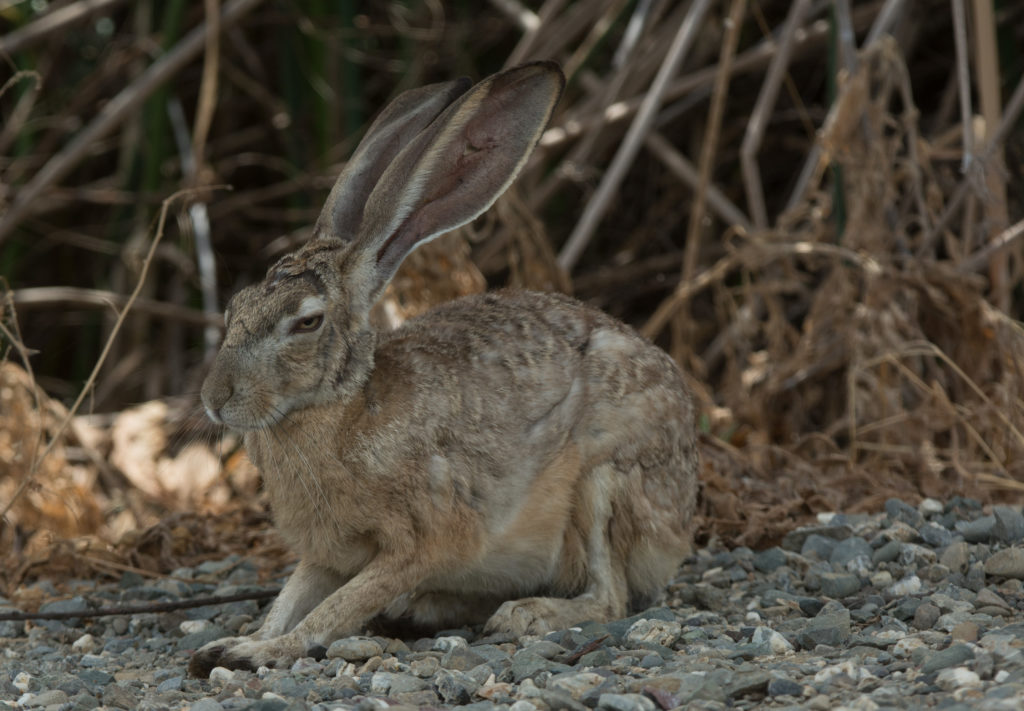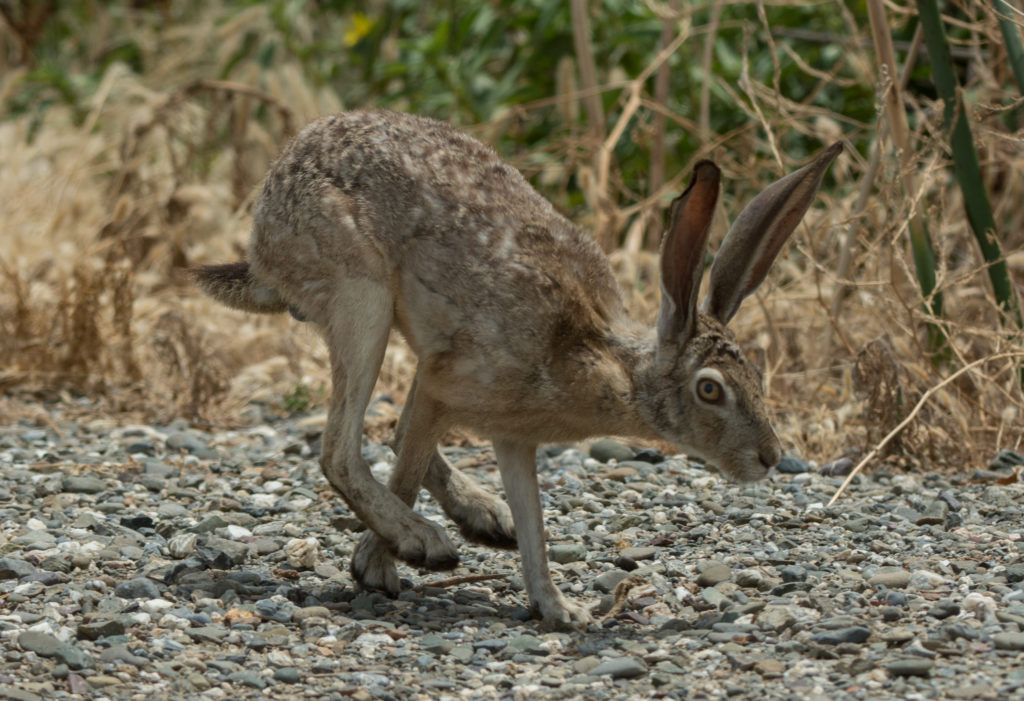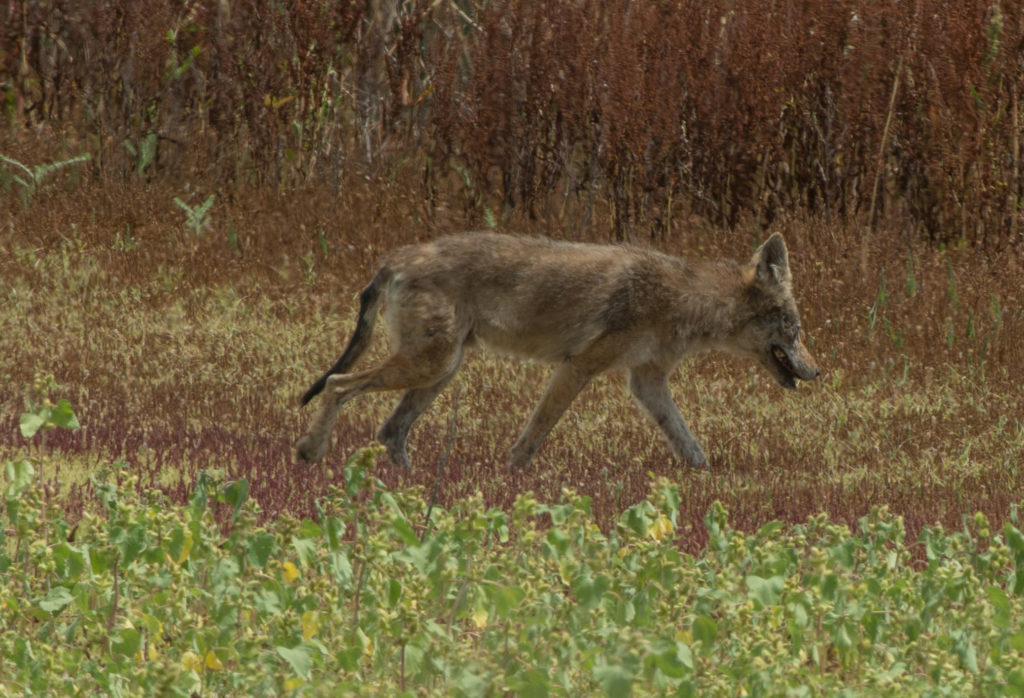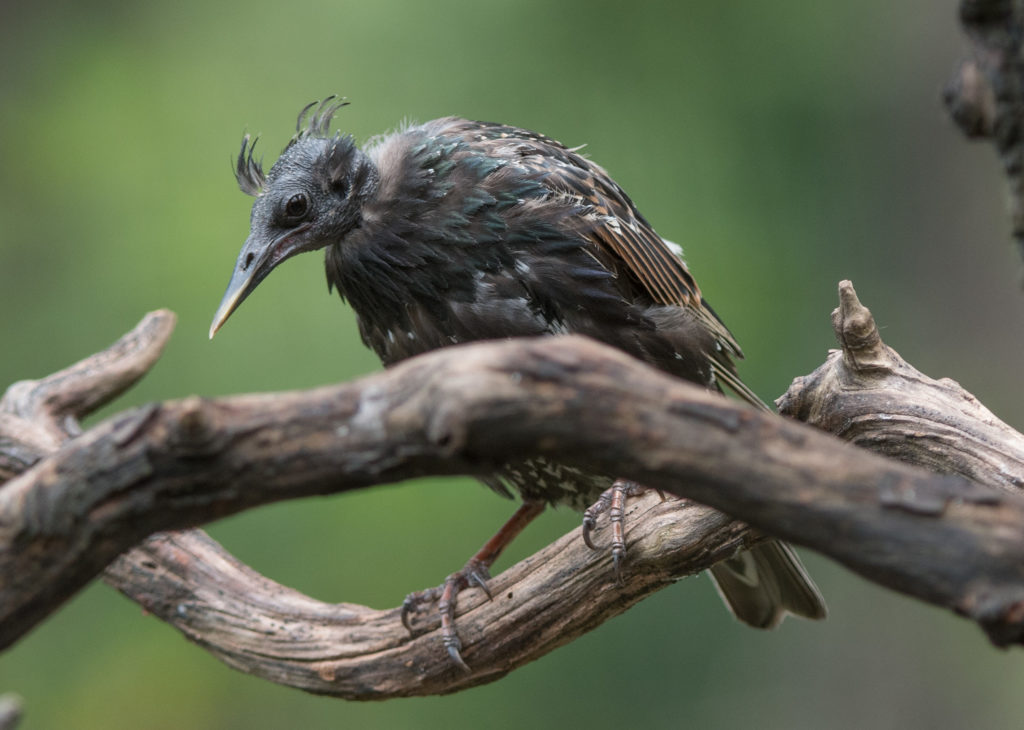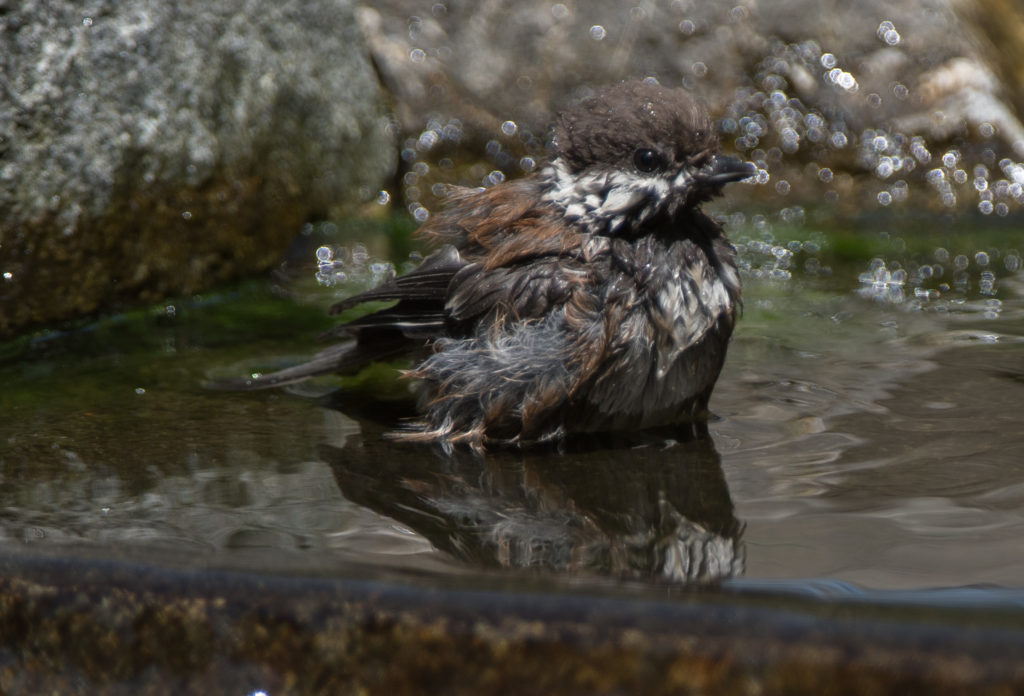On our last full day in Point Reyes National Seashore I discovered the following flycatcher foraging in a small clearing beside a trail. At one point the flycatcher flew to a large bush and collected a very large moth which it then consumed back on its perch. I’m not sure what species of flycatcher this was, but after a while it was joined by a Pacific Slope flycatcher, the same species we had nesting where we were staying. The second photo is of the Pacific Slope flycatcher back at our house (for comparison).
On an excursion to Park headquarters I found a family of at least one adult and four young Black phoebes (also flycatchers) flying around an open area with a wooded creek on one side. Black phoebes are often found near water.
Again, near park headquarters, we found a couple of Acorn woodpeckers, the one pictured below being a male.
Moving north to Oregon, the town of Gold Beach has a jetty that juts out into the Pacific Ocean and it makes a perfect observation point for aquatic birds and marine mammals. While there I observed and photographed a sea lion with a large salmon it had caught. This first photo is of a Pelagic cormorant (note the prominent white patches on its flanks which makes it easier to identify at this time of year). Photos of Ospreys, of which there were several, follow. 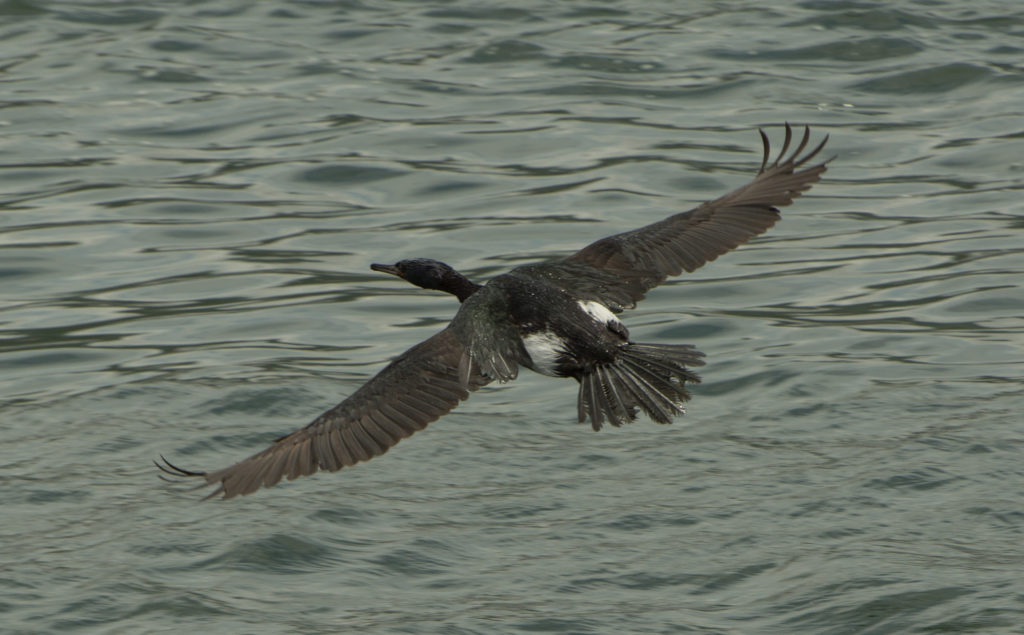
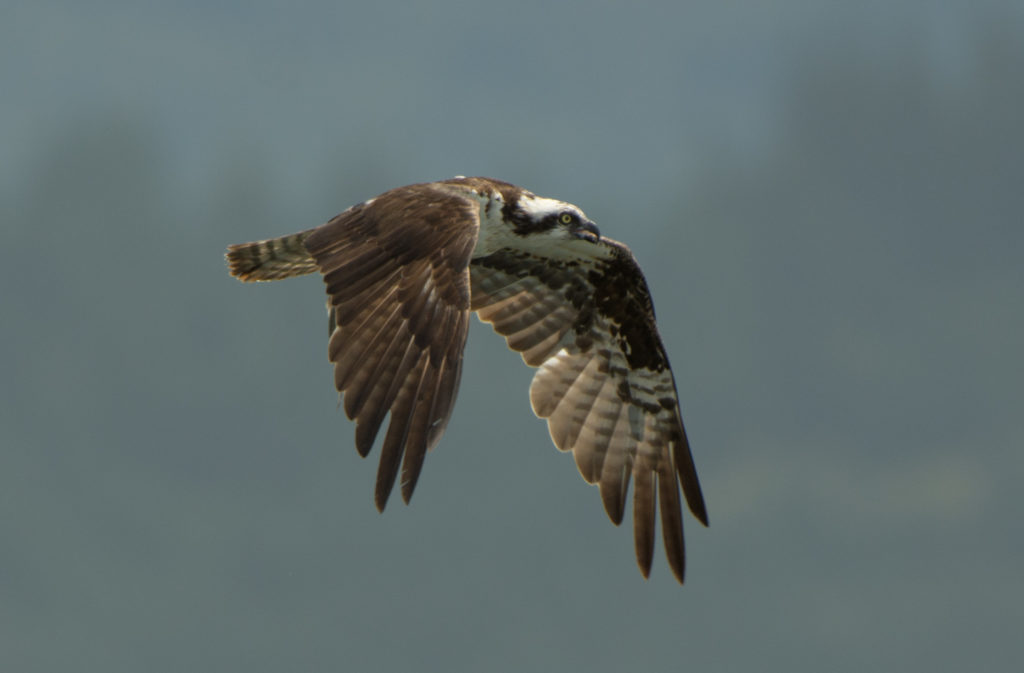
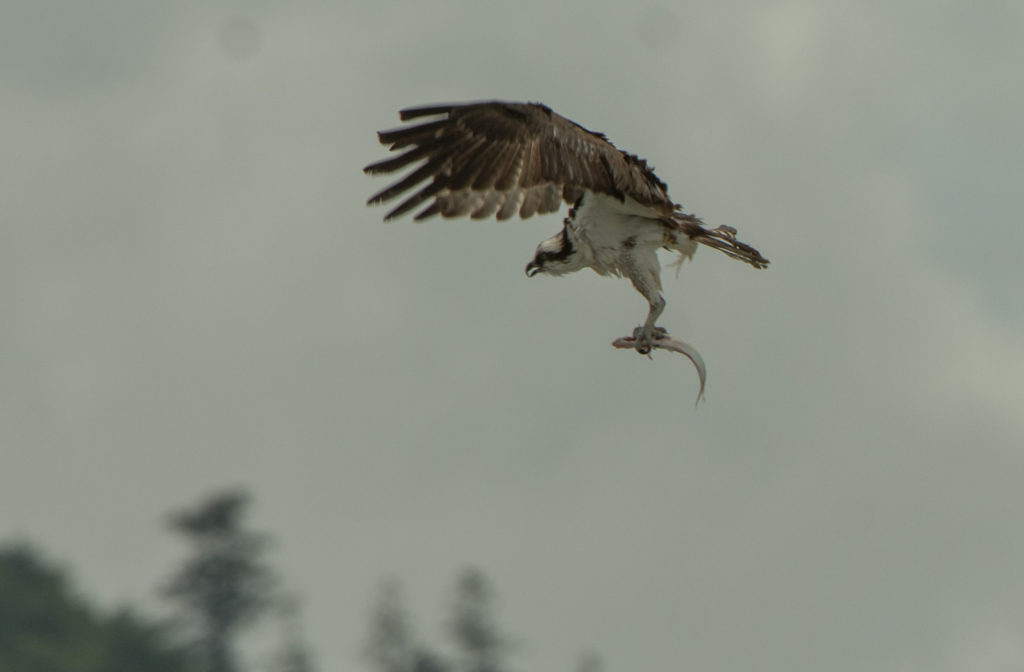
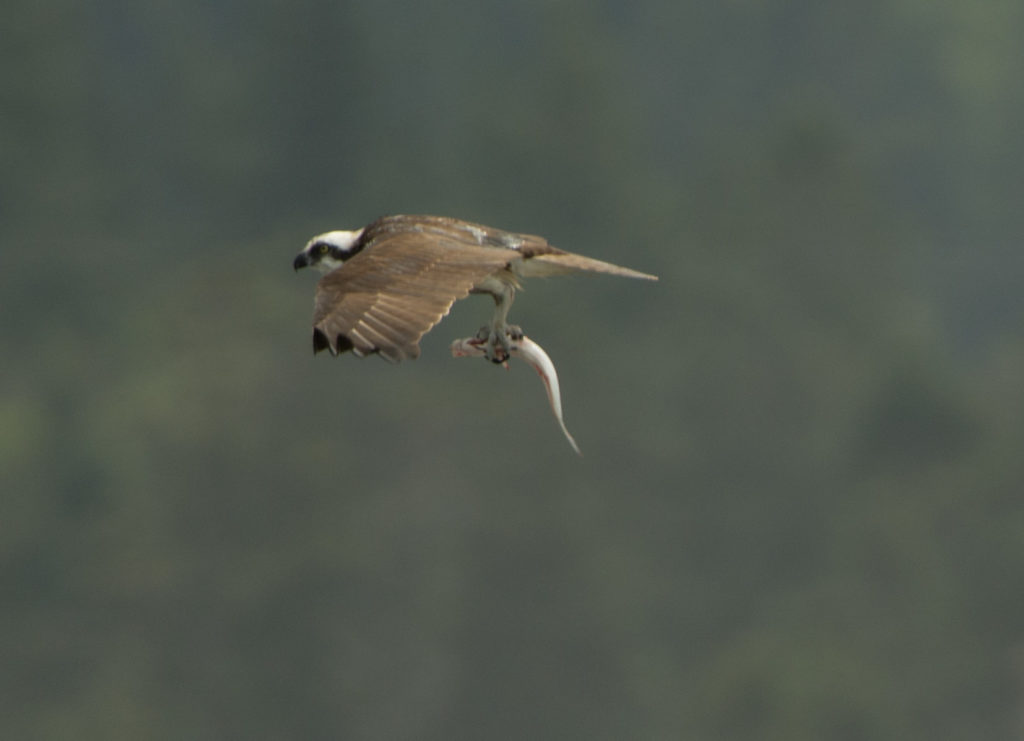
This singing Song sparrow was photographed at Ona Beach State Park in Oregon.
Directly across Highway 101 from the state park was North Beaver Creek Road. Although I have always stopped at the state park on previous trips, I hadn’t realized that there was an intersecting road directly across the highway. North Beaver Creek Road bisects a rather extensive wetland where I photographed this Cedar waxwing taking a break from eating twinberries beside the road. Waxwings are probably among our most beautiful birds in North America, and each one looks exactly the same as every other one.
Also along North Beaver Creek Road I found a couple of families of Redwinged blackbirds, and this next photo is of one of the young trying to stay inconspicuous while waiting to be fed by one of the adults.
This concludes posts from the California trip. I purchased a new camera (Nikon D500) at the beginning of the trip when passing through Seattle but didn’t use it for any photography on the trip. I’ll address the new camera in my next post and begin showing photos I’ve taken with it in my yard.

